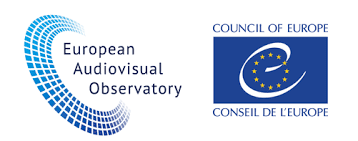
Created in Strasbourg in 1992 as an enlarged partial agreement of the Council of Europe, this public service organisation monitors European market and legal information on the industry covering the sectors of cinema, television, radio, video and the different on-demand services, such as video-on-demand (VOD) or catch-up television.
It provides European comparisons, as well as national and even regional information. For example, it guarantees ownership transparency television channels and companies throughout 42 European countries and Morocco, through a free access and monthly updated database called MAVISE, designed in coordination with the European Commission.
Other free access databases managed by the EAO include IRIS MERLIN, on legal information pertaining to the audiovisual sector in Europe, LUMIERE, on admissions of the films released in European cinemas since 1996, LUMIERE VOD, a directory on European films available on VOD in Europe, and AVMSDatabase, on the transposition of the Audiovisual Media Services Directive (AMSD) into national legislation.
The EOI works through two departments of information, namely, market and legal. Both issue their own publications; the latter also organises workshops.
In order to fulfil its competences, the EOI operates within a framework relating to the audiovisual sector, either coming from the Council of Europe, the World Intellectual Property Organisation (WIPO), the UNESCO, the Bureau for Intellectual Property (BIP).
The Council of Europe has produced nine texts relating to the audiovisual sector: the European Convention on Transfrontier Television, the Protocol amending the European Convention on Transfrontier Television, the European Convention on Cinematographic Co-Production, the European Convention relating to questions on Copyright Law and Neighbouring Rights in the Framework of Transfrontier Broadcasting by satellite, the European Convention on the Legal Protection of Services based on, or consisting of, Conditional Access, the European Convention for the protection of the Audiovisual Heritage, the Protocol to the European Convention on the protection of the Audiovisual Heritage, on the protection of Television Productions, the Convention on Cybercrime, and the Additional Protocol to the Convention on cybercrime, concerning the criminalisation of acts of a racist and xenophobic nature committed through computer systems.
Five instruments come from the WIPO: the Berne Convention for the Protection of Literary and Artistic Works, the International Convention for the Protection of Performers, Producers of Phonograms and Broadcasting Organizations (Rome Convention), the Treaty on the International Registration of Audiovisual Works (Film Register Treaty), the WIPO Copyright Treaty (WCT), and the WIPO Performances and Phonograms Treaty (WPPT).
Finally, the UNESCO is the source of two international agreements: the Universal Copyright Convention (as revised at Paris on 24 July 1971 and annexed Protocols 1 and 2), and the European Convention on the protection and promotion of the diversity of cultural expressions. The WIPO and the UNESCO, together with the BIP, are authors of the Convention for the Protection of Producers of Phonograms Against Unauthorized Duplication of Their Phonograms.
The EAO further follows national regulation, such as rules transposing the AMSD into EU Member States, rules pertaining to European works, and rules pertaining to the public service media.
On 11 July 2024, the EAO reported that the vast majority of dominant television and VOD groups in Europe are based in the United States. The twenty top television and VOD players active in Europe, ordered by the number of operating markets (top to bottom), are: AT&T, Disney, Netflix, Amazon, Comcast, Paramount, Mubi, Rakuten, Huawei, AMC Networks, Apple, Vivendi, Alphabet, the BBC, VWorld, Microsoft, Axxola, the PPF Group, the Antenna Group, and the Love TV Channels. Of the top ten, eight are US-based (only Rakuten and Huawei are not); of the top twenty, only seven are European players and they occupy the bottom positions (Vivendi, the BBC, VWorld, Axxola, the PPF Group, the Antenna Group, and the Love TV Channels).
The EAO has a team of 27 people and it is headed by Dr. Susanne Nikoltchev.
Source of image: Copeam



 Subscribe
Subscribe